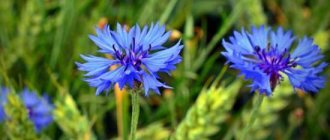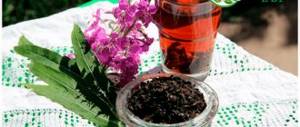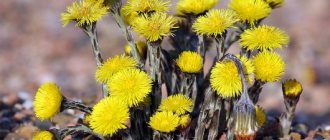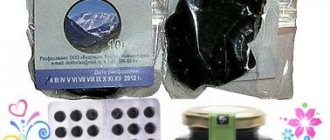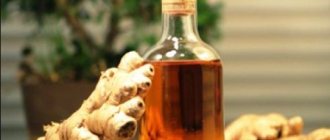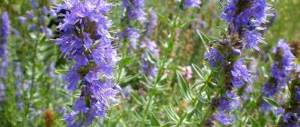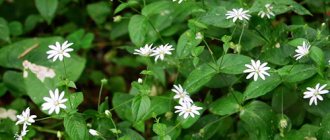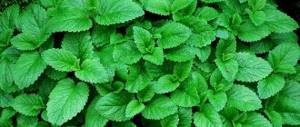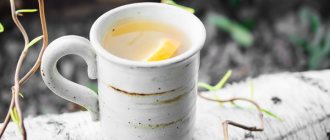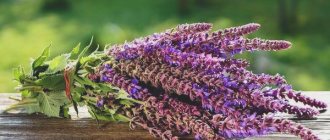Horsetail is a herbaceous perennial plant growing almost everywhere. It can be seen in meadows, road slopes, and vegetable gardens. It does not grow only in deserts and permafrost areas. Horsetail has good medicinal properties, which allows it to be used in the treatment of many diseases; some diseases of internal organs are contraindications to its use.
The plant has other names - earthen cone, cat's tail, field tree, panicle.
What it looks like and where it grows
Horsetail is a perennial herbaceous plant from the Horsetail family. It has a long creeping rhizome with tuberous branches.
The life cycle of a field plant begins with the appearance of generative straight stems of brownish or pinkish color up to 25 cm in height. Each of the rods ends in a pistil, or spikelet. After the spores are scattered, such shoots die off, and instead of them, green vegetative stems with serrated leaves grow in whorls of 6-16 pieces, directed obliquely upward.
For medicinal purposes, whorls, stems and pistils of horsetail are used
Horsetail grows throughout almost the entire territory of Eurasia and takes root in tropical, temperate and subarctic climates. In Russia it is found everywhere except semi-desert areas and the Far North. You can see the perennial in Europe and America, Great Britain and Korea, Japan and Iceland.
For growth, the grass usually chooses floodplain meadows and the outskirts of swamps; it can also be found along river banks, on sandbanks, in pastures and wastelands. The plant is often adjacent to cereals - wheatgrass and fescue.
Chemical composition of horsetail grass
Photos, medicinal properties and contraindications of horsetail deserve attention due to the rich composition of the plant. The stems and leaves contain:
- ascorbic acid;
- flavonoids;
- mineral salts;
- silicic acid;
- alkaloids and saponins;
- malic, linoleic, quinic and chicoric acids;
- essential oils;
- tanning components;
- carotene;
- resin and bitterness;
- glucose and galactose;
- pectins;
- polyoxyanthraquinones;
- arabinose and xylose.
The plant is classified as slightly toxic and should be used with caution. But if you strictly follow proven recipes, horsetail is beneficial for the human body.
Plant properties
Horse tail is used not only as a medicinal product, but also as a household product. Our grandmothers knew how to use horsetail to boost immunity and improve the condition of the body after a long winter. Healers advise using the plant as an excellent remedy for vitamin deficiency in the spring; consuming soft shoots, which are rich in vitamins and nutrients, as food. The succulent shoots were collected in early spring and food was prepared from them: soups, omelettes, and used as a filling for pies. The tubers of the plant, which contain a lot of starch, were also consumed.
The strong stems have long been used to clean dishes and polish stone and wood. A grayish-yellow dye was obtained from the root, which was used to dye animal fur.
Today this plant causes many problems for summer residents and gardeners. This is a weed that is quite difficult to remove from the site. This is due to the fact that horsetail has a very long root, with the help of which it takes silicic acid from the ground in large volumes and accumulates it in its cell membranes.
corn silk - medicinal properties and contraindications
What diseases does horsetail help with and what does it treat?
Due to the rich chemical composition of field grass:
- cleanses the blood and strengthens the walls of blood vessels;
- improves the functioning of the cardiac system;
- stops bleeding;
- helps fight inflammation and bacterial infections;
- promotes rapid healing of wounds and burns;
- removes parasites from the intestines;
- has diuretic properties and eliminates swelling;
- strengthens the immune system.
Indications for the use of horsetail include nervous disorders and poor concentration. Plant-based products are beneficial for diarrhea and gastrointestinal inflammation, cough and bronchitis, and irritation of the oral mucosa.
The healing properties of horsetail for men
The beneficial substances in the plant have a beneficial effect on the endocrine and reproductive system in men. You can take infusions and decoctions of the herb when libido is weakened, and also as a preventive measure for inflammatory prostate diseases.
The perennial field plant strengthens overall endurance and can be beneficial during increased physical activity. You can use natural remedies to cleanse the body when working in hazardous industries.
What are the benefits of horsetail for women?
First of all, the plant is used for the prevention of gynecological diseases. The herb is beneficial in the treatment of fibroids, infertility, endometriosis and polycystic ovary syndrome. It can be used to relieve the symptoms of menopause.
Decoctions based on horsetail pistils help with internal bleeding and uterine polyps
However, during pregnancy the use of the herb should be avoided. It can increase the muscle tone of the uterus, which can lead to miscarriage. Also, the plant is not used during breastfeeding; horsetail worsens the quality of milk, makes it bitter and generally reduces lactation.
Benefits for children
Offering the plant for internal use is not recommended for children and adolescents. External use of the herb is allowed for children over three years of age; usually, lotions and compresses are made based on decoctions and infusions for abrasions and bruises.
Attention! Horsetail has strict contraindications. Before using the herb for the first time to treat a child, you should consult a pediatrician.
Beneficial properties of horsetail pistils
Pistils are young grass seedlings that appear on generative shoots. These parts of the plant are edible and contain large amounts of vitamin C, carotene and sugar. They can be used for culinary purposes and to treat diseases. In particular, pestles are beneficial for colds and inflammation, and for gastrointestinal disorders.
Properties of horsetail extract
Field herb extract in liquid or dry form can be purchased at the pharmacy. The drug helps:
- remove toxins and heavy metals from the body;
- improve metabolism;
- strengthen blood vessels;
- eliminate fungal infections and inflammation.
The drug can be used in the fight against deposits of salts and stones in joints and internal organs.
The healing properties of horsetail for adenoids
With the permission of the pediatrician, the field plant can be used for adenoids in children for instillation into the nose. Usually the following solution is prepared:
- two large spoons of the plant are crushed;
- pour the raw material with half a glass of hot water;
- wrap the container in a towel and leave for 40 minutes;
- filter through cheesecloth.
We recommend reading: Zyuznik herb: medicinal properties and contraindications, use for women, reviews, photos
The solution is instilled into the nose three times a day for a month; a fresh portion of the product must be prepared every day. Before the procedure, it is recommended to rinse the sinuses with salt water.
Horsetail infusions are suitable for gargling with sore throat
The healing properties of horsetail for hair
A decoction of horsetail has a very beneficial effect on hair, stops hair loss and makes strands strong and shiny. It is recommended to use a herbal remedy every time you wash your hair to rinse. The herb not only improves the health of curls, but also helps get rid of dandruff, as it has antifungal properties and regulates the oiliness of the epidermis at the hair roots.
Medicinal properties of horsetail for weight loss
A herbal decoction helps to get rid of excess weight. The field plant normalizes metabolic processes and restores water balance in tissues, promotes the removal of accumulated waste and toxins. The use of the drug improves the functioning of the liver and kidneys.
Benefits of horsetail tea
Particularly popular is a remedy such as horsetail-based tea. It can be used in case of weakened immunity and cough, during seasonal viral diseases. Tea is beneficial for inflammation of the oral cavity, high cholesterol and a tendency to swelling.
What does it help with?
The plant is used in medicine mainly due to its exceptional effects on urinary tract diseases. It is helped in this by its distinctive diuretic properties, which help get rid of harmful bacteria that colonize the urinary tract and cause discomfort.
And not only this. Horsetail benefits also include its ability to flush out sand and dissolve urinary stones. The benefits of the plant also include improving cardiac function and blood circulation while improving renal elimination. This predetermines its use in traditional medicine for inflammatory processes in the urinary tract, kidneys, edema of various origins (contraindication is acute inflammation of the kidneys due to irritation of this organ).
Article for you:
Medicinal properties of horehound herb and its use in folk medicine
Due to its ability to increase metabolism, the herb is successfully used for diseases of the endocrine glands, especially during menopause (swelling of the legs due to impaired metabolism, etc.).
The medicinal properties of horsetail include improving the stability of connective tissue and, therefore, use for rheumatic diseases, chronic polyarthritis, arthrosis, pulmonary and bone tuberculosis, painful skin diseases or hair loss, fractures, etc.
The healing properties of horsetail are especially pronounced in relation to stopping bleeding (hemoptysis, uterine and hemorrhoidal bleeding). The plant works well for asthma. Its antiparasitic effect has also been discovered.
Traditional medicine recommends horsetail for dropsy, sciatica, gout, hematuria, arterial hypertension, abdominal pain, urinary incontinence, atherosclerosis, pulmonary hemorrhage, vasodilatation, eczema, white discharge in women, non-healing wounds and other diseases.
Methods of preparation, use and dosage of horsetail
Alcohol and water medicinal products can be prepared based on medicinal herbs. When using them, it is important to follow the dosages recommended in the recipes, otherwise side effects may occur.
Horsetail tincture
Horsetail tincture is usually prepared not with alcohol or vodka, but with dry white wine. The recipe looks like this:
- 20 g of dry or fresh raw materials are poured with 1 liter of alcohol;
- close with a stopper and shake;
- put in a dark place for a week.
The finished product is filtered through folded gauze. Instructions for use of horsetail herb recommend consuming two large spoons of the tincture on an empty stomach in the morning.
Treatment with horsetail tincture is carried out for no longer than two weeks.
Horsetail infusion
An aqueous infusion of the plant is popular in folk medicine. It is prepared in two ways.
- Cold. It is necessary to pour three large spoons of dry raw materials with 500 ml of water and leave for 24 hours. The strained product is used externally to add to baths, as well as for compresses and lotions.
- Hot. The crushed raw materials are poured into 250 ml of boiling water and left for half an hour, and then filtered. The product is used both for wiping the skin and internally; in the latter case, the dosage is determined in accordance with the specific disease.
Most often, the perennial infusion is consumed in a volume of no more than one large spoon.
Horsetail infusion can be prepared from fresh plant stems
Horsetail extract
An inexpensive plant extract can be purchased at any pharmacy. It is used for urolithiasis and poor elasticity of connective tissues, for coughs and bronchitis, for diabetes and rheumatism. Half a briquette of dry extract should be diluted in 200 ml of water, boiled for half an hour and strained. Take half a small spoon up to four times a day.
Pharmaceutical horsetail extract is a fine powder from a dried plant.
You can prepare the liquid extract yourself. To do this, pour six large spoons of crushed raw materials into a glass of boiling water and leave until completely cooled. The product is used in similar small dosages, since the concentration of the extract is very high.
Advice! You can use a pharmacy or homemade preparation for rinsing with stomatitis.
Horsetail decoction
An aqueous decoction of the plant is prepared according to the following recipe:
- pour a large spoonful of dried herb into a glass of water;
- boil for a minute after boiling;
- remove from the stove, keep covered for another half hour and strain.
You can take the drug in case of kidney failure and severe swelling, a large spoon four times a day.
You can use a diuretic decoction of horsetail for cystitis.
Horsetail tea
The beneficial properties of field spring horsetail are in demand in cases of weakened immunity and colds. The remedy is made like this:
- 10 g of dry stems are mixed with an equal amount of linden and plantain;
- add 5 g each of thyme, fennel and elderberries;
- measure out two small spoons of the mixture and pour in 250 ml of hot liquid.
The tea is infused for ten minutes and filtered, and then drunk in the morning and evening, 200 ml each.
Tea can only be brewed from horsetail grass, but the taste of the drink in this case may be bitter.
Juice
Treatment with horsetail is carried out for swelling and varicose veins - the fresh juice of the plant is beneficial. To get it, you need to rinse the stems and leaves of the grass in cold water, grind it into a paste and squeeze through cheesecloth. Take 10 ml three times a day.
Important! The juice can be used to stop nosebleeds; in this case, three drops are instilled into each sinus.
Horsetail juice for internal use can be diluted with water
Ointment
You can prepare an ointment based on a field plant at home like this:
- dry stems and whorls of horsetail are ground into powder;
- mixed with Vaseline or goose fat in a ratio of 4:1;
- bring to homogeneity and cool.
The ointment can be used for purulent rashes, ulcers and cuts.
When preparing the ointment, you can also use fresh horsetail pulp.
Baths
Horsetail is of great benefit when used in healing baths. For poor circulation, rheumatism, skin inflammation and frostbite, you must:
- pour 1 liter of boiling water over 100 g of dry herbs;
- keep covered for half an hour;
- strain the infusion through cheesecloth and pour into a filled bath.
Immerse in the container for no more than a quarter of an hour; the procedure must be repeated every other day. In total, it is allowed to conduct a course consisting of 15 baths.
Holy bath after childbirth
Today in a maternity hospital no one will offer you a horsetail bath. But there were times when it was necessary. Women gave birth at home and depended on a midwife.
Article for you:
Beneficial properties of the Ivan-da-Marya flower and its use in folk medicine
It often happened that some mothers experienced visual impairment after a difficult birth. The reason was probably that the kidneys suffered greatly during childbirth. A bath with medicinal herbs promoted blood circulation in the kidneys, relieved pressure in the eyes, as a result of which vision problems were gradually corrected.
When used internally as a tea, the plant was used to stop severe bleeding after childbirth due to its effect on the elasticity and strength of vascular walls.
The use of horsetail in folk medicine
Horsetail is often found in home health recipes. The plant is used to relieve symptoms of acute and chronic diseases.
How to take horsetail for swelling
For swelling, the following decoction has a good effect:
- 20 g of dry herb is poured into 200 ml of liquid;
- simmer in a water bath under a lid for half an hour;
- cool until warm and filter;
- add fresh water to the initial volume.
You need to take the decoction two large spoons three times a day on a full stomach.
For bleeding
To improve blood clotting, you can use horsetail tincture. They do it like this:
- 30 g of dry plant stems are poured into 1 liter of unfortified white wine;
- kept in a dark place for a week;
- pass the product through gauze.
We recommend reading: Volodushka herb: medicinal properties, contraindications, application
The tincture is consumed 50 ml three times a day on an empty stomach.
For stomatitis
For dental diseases and inflammation of the gums, horsetail juice is used. Fresh leaves of the plant are washed, crushed and the pulp is squeezed through several layers of gauze. The resulting liquid must be boiled and cooled. The juice is used to rinse the mouth twice a day for two weeks; to obtain the required volume, it is diluted with water.
For diabetes
The following decoction helps normalize glucose levels and prevent diabetes complications:
- 40 g of dry raw materials are poured with 250 ml of hot water;
- keep covered for at least 12 hours;
- passed through cheesecloth for filtration.
You need to take 15 ml three times a day right before meals.
For hypertension
A simple horsetail-based infusion helps regulate blood pressure:
- 20 g of dry field plant is poured with a glass of hot water;
- stand for half an hour;
- filter and squeeze out the grass.
You need to take half a glass on a full stomach.
For diarrhea
Horsetail has astringent properties and helps with diarrhea. Traditional medicine offers the following infusion:
- two large spoons of raw material are poured into 400 ml of hot water;
- infuse until warm;
- filter.
The entire volume of the drink must be consumed throughout the day in small portions of several sips.
Horsetail infusion has a strong astringent and fixing effect.
For rheumatism
The healing properties of horsetail are beneficial for joint ailments. Usually a decoction of the plant is made:
- 100 g of dry grass is poured into 1 liter of water;
- evaporate over low heat until half of the liquid remains;
- filter and add 250 g of honey to the decoction;
- keep in a water bath for another half hour, not forgetting to remove the foam.
The finished product is taken in a large spoon up to five times a day.
For skin diseases
The medicinal properties of horsetail are in demand for dermatitis, ulcers and acne. Dry stems and leaves are ground into powder and boiled in a small amount of water for half an hour. Soak a bandage or gauze in the resulting product and apply a compress to the affected area for 40 minutes.
For pneumonia
Horsetail fights bacterial processes and speeds up the treatment of pneumonia. The benefit comes from the fresh juice of the plant - it must be squeezed out of the pulp of leaves and stems. Take the product with a large spoon up to five times a day.
Specialized formulations and medicinal preparations
Mixture for the treatment of tuberculous inflammation of the lymph nodes
Take 50 grams of the plant, 30 grams each of knotweed and gentian root. Mix everything thoroughly. 3 tablespoons of the resulting composition are poured into 0.5 liters of running water, placed on low heat and boiled for about 10 minutes. Take 100 ml of the mixture in four doses a day on an empty stomach.
Treatment of adenoids in children
You can use raw materials both in natural and dried form. Finely chop 2 tablespoons of herbs and pour a cup of boiling water over it. Cover the container with a blanket and leave for 40 minutes. Filter the composition. The product is prepared daily and is not stored in the refrigerator. The duration of therapy is a month. Drop 5 drops into each separate nostril three times a day.
In order for the product to penetrate deep into the sinuses, it is necessary to rinse the sinuses with a solution based on sea salt. After 3 days, strong discharge from the nose will be observed; therapy cannot be stopped; this is a normal phenomenon with this treatment.
Explosion from the growth of inflammation of the skeletal bones, joint diseases
100 grams of raw materials are poured with a liter of water, put on low heat and boiled until the amount of broth is reduced by half. Clean the composition, add 250 grams of honey to it and place it in a water bath for half an hour, removing the formed foam. Drink a spoon 5 times throughout the day.
Explosion from urolithiasis of the bladder
Ingredients:
- spoon of mushroom pusher;
- 2 spoons of knotweed;
- 6 tablespoons of rosehip rhizome.
All ingredients are mixed well and poured with 3 cups of running water. Place the container on low heat and cook for a quarter of an hour. Then the composition is allowed to brew for an hour. Drink ½ cup three times a day on an empty stomach. The course of treatment is a month.
Healing mixture for the treatment and prevention of ailments of joints and bones
Collection composition:
- 10 grams of horse tail;
- 10 g linden flowers, mallow, plantain leaves;
- 5 grams of elderberry, thyme, fennel berries.
All ingredients are mixed.
You need to take 2 tablespoons of the resulting mixture and pour a cup of boiling water. Close the container and leave for 20 minutes. Then thoroughly clean the composition. You need to drink 150 grams three times a day. You can take the infusion with honey. The course of therapy is 3 months. Medicine for skin diseases
Horsetail is mixed with linden blossom in equal proportions. Take a spoonful of the mixture and pour a mug of boiling water over it. Leave for an hour. Wipe the infected areas of the skin with a non-cold mixture before going to bed. You can freeze the product in ice cube trays and wipe your face.
Remedy for tired legs
2 tablespoons of horsetail are poured into a mug of boiling water and left for a while so that the composition is well infused. The resulting product is used as a compress for the feet or used to prepare foot baths.
Application in cosmetology
Another area of application for horsetail is home cosmetology. The valuable properties of the plant are used to strengthen hair and get rid of dandruff. You need to rinse your hair with infusions and decoctions after each hair wash.
Horsetail regulates the production of subcutaneous sebum in case of excess oily hair
Horsetail can also be used to treat problem skin. For example, this mask is popular:
- a large spoonful of honey is mixed with the same amount of carrot juice;
- add 15 ml of horsetail decoction;
- stir the components;
- soak a clean piece of gauze in the mask and apply it to the face for 20 minutes.
It is recommended to repeat the procedure at least twice a week to get a quick effect.
Chemical composition and pharmacological properties
Organic substances of various groups were found in horsetail grass: alkaloids, saponins, vitamins, phytosterols, flavonoids, etc. Of the inorganic substances, the most interesting are silicic acid compounds, which, in fact, determine the main pharmacological effect of horsetail-based drugs. In terms of silicon content, horsetail has no equal! — it contains about 10% silicon compounds in terms of dry matter. Alkali metal silicates (usually potassium and lithium) are highly soluble in water, unlike silicon compounds with alkaline earth metals (for example, barium). The silicic acid salts give the plant its characteristic “roughness”—hence the use of the herb for polishing tin items.
The nutritional value is represented by young shoots of horsetail and rhizome bulbs, in which vitamins, starch, etc. are found. Toasted bulbs taste like nuts.
The pharmacological properties of horsetail preparations are confirmed by the results of experiments by many researchers, both on laboratory animals and in clinical settings.
Preparations based on horsetail increase diuresis, which makes them valuable for relieving edema of various origins. Unlike salt diuretics, when using horsetail, potassium is not washed out of the body. For this reason, treatment with horsetail does not pose a threat to patients suffering from heart disease. The diuretic properties of horsetail are superior to such remedies as kidney tea (orthosiphon) and the drug diuretin.
Horsetail preparations have hemostatic properties and also help eliminate inflammatory processes. It is noteworthy that horsetail does not stimulate the production of platelets, therefore it is safe in the treatment of patients suffering from cardiovascular diseases, with problems of the arterial and venous systems.
Horsetail has proven itself to be an excellent detoxifier for lead salt poisoning. In this case, alkali metal silicates bind and precipitate heavy metals from soluble compounds, which facilitates their further removal from the body.
Horsetail phytosterols stimulate the function of the adrenal cortex.
Silicon is a building material necessary for hair growth, so its decoctions are used in cosmetology for washing the hair and rubbing into the skin of the scalp.
Contraindications and side effects of horsetail
The health benefits and harms of horsetail vary from person to person. In some conditions, the medicinal plant must be discarded. It should not be taken if:
- pregnancy and lactation;
- hypotension;
- elevated cholesterol levels;
- individual allergies;
- heavy internal bleeding;
- inflammatory kidney diseases.
Important! The use of horsetail for medicinal purposes is carried out for no more than three months in a row; the plant causes a deficiency of vitamin B1 and potassium in the body.
Beneficial properties of horsetail for plants
In the garden, horsetail is considered a harmful weed, which is very difficult to get rid of. But if desired, it can be turned to benefit - the infusion of the stems and leaves of the plant has fungicidal properties.
About 2 kg of grass should be poured with a bucket of water and left to infuse for a day. Then the product is boiled for an hour, cooled and filtered, and before use it is diluted with clean liquid in a ratio of 1:5. The solution can be sprayed on plants affected by powdery mildew and other fungal diseases.
With horsetail to fight excess weight
Our problem, what secrets are there, is to first accumulate fat, then be surprised that it is deposited on the waist, and then fight it. So we are looking for means for losing weight (fortunately, folk remedies). We suggest using one more. They say that horsetail has good results for weight loss. Reviews confirm this. But there are caveats.
The effect of horsetail is based on its diuretic effect. Therefore, it is not recommended to take this drug for more than a month, separately or in combination - the water cannot come out indefinitely. And you shouldn’t forget about physical activity and proper nutrition either.
For those who have decided to lose weight with the help of horsetail, here are recipes that are especially popular among men and women.
- For 1 glass of water take 4 tbsp. horsetail. Evaporate in a water bath for half an hour. Add water to a volume of 200 grams. Drink 1/3 glass an hour after meals.
- Prepare the mixture: 10 g each of mantle, strawberry leaf, 20 g each of horsetail and elderberry root, 100 g of birch leaves. Mix 1 tbsp. collection with a glass of water. Boil for a couple of minutes, cool. Drink before bed.
- Take equal parts of horsetail, nettle, flaxseed, meadowsweet and buckthorn bark. Pour a glass of hot water and leave in a water bath for 10-15 minutes. Drink no more than 2 months, a teaspoon 3-4 times a day, an hour before meals.
- Take horsetail and birch leaves in equal parts, pour boiling water over them and let stand for 10-15 minutes. Before main meals, drink ½ glass (0.5 hours before).
Collection and preparation
Horsetail harvesting is carried out twice per season. In May, young shoots and pistils are harvested, and from mid-July - vegetative stems and leaves. The grass should be cut at a level of 5 cm from the ground.
For medicinal purposes, horsetail can be used both dry and fresh.
Harvested raw materials for long-term storage are dried in the fresh air under a canopy or in a room with low humidity. Then the stems and leaves are poured into paper bags or a glass jar and stored in a dark place at room temperature. They can be used for up to four years.

